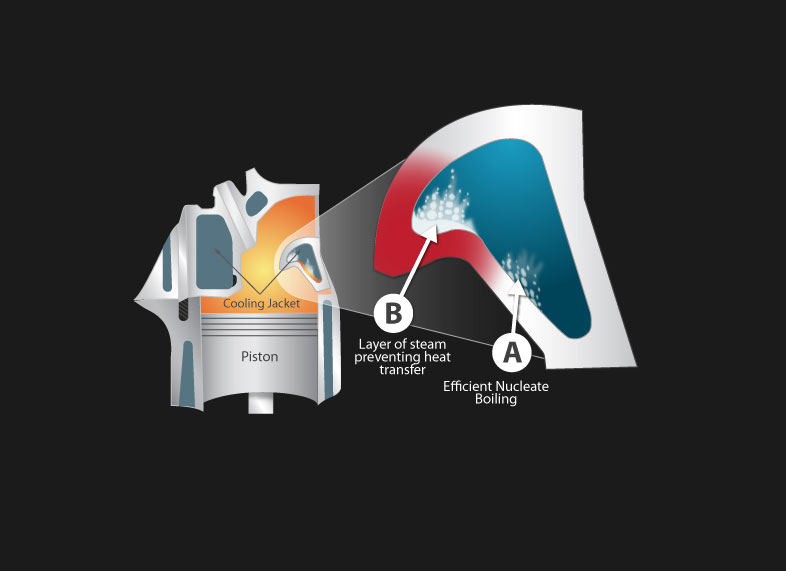info@waterless180.com
Technical Helpline: 01792 572299
info@waterless180.com
Technical Helpline: 01792 572299

Published: 16/03/2015
Since the 1930's engine coolants have been based on a mixture of ethylene glycol, water and corrosion inhibitors. All such mixtures have inherent physical and chemical limitations that restrict engine performance and affect reliability. Evans Waterless Coolants represent a major step forward in engine cooling and engine protection technology.
Within an engine cooling system the hottest surfaces are those adjacent to the combustion chamber, specifically the cylinder liners and cylinder head. Evans have proven that in these areas Glycol-Water mixtures regularly cross the thermal boundary that separates Efficient Nucleate Boiling (A in Fig.1) from Inefficient Critical Heat Flux (CHF).
CHF is synonymous with the condition Departure from Nucleate Boiling (DNB). When DNB occurs in an engine cooling system a film of steam bubbles form adjacent to the engine hot-spots (B in Fig.1). This is also referred to as Film Boiling. Because steam dissipates less than 1/30th of the heat that water does, local metal temperatures over-heat rapidly. This leads to a vicious cycle of over-heating.
This over-heating and excessive thermal stress leads to several problems including;
• Distortion of the cylinder head and liners
• Pre-ignition (engine knock) in carburetted engines
• Reduced combustion efficiency and detonation issues in fuel injected engines
• Erosion caused by pitting around the liner, cylinder head and coolant pump
• Cavitation caused by vapour escaping - due to pressure drops occurring within the cooling pump
• Boil-Over when running and After-Boil when the engine is stopped
Caterpiller state that "Over-heating is the most common cause of engine down-time and responsible for >50% of catastrophic engine failures".
